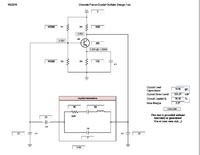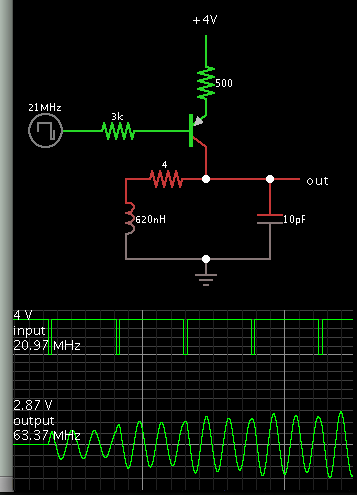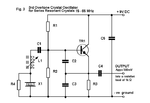itayd100
Junior Member level 3

Hello,
I want to work with my crystal in 3rd overtone (64MHz).
I made the attached circuit and I can get just 21Mhz.
How can I get it working?
Thanks,
Itay
https://www.farnell.com/datasheets/1364712.pdf
I want to work with my crystal in 3rd overtone (64MHz).
I made the attached circuit and I can get just 21Mhz.
How can I get it working?
Thanks,
Itay
https://www.farnell.com/datasheets/1364712.pdf





